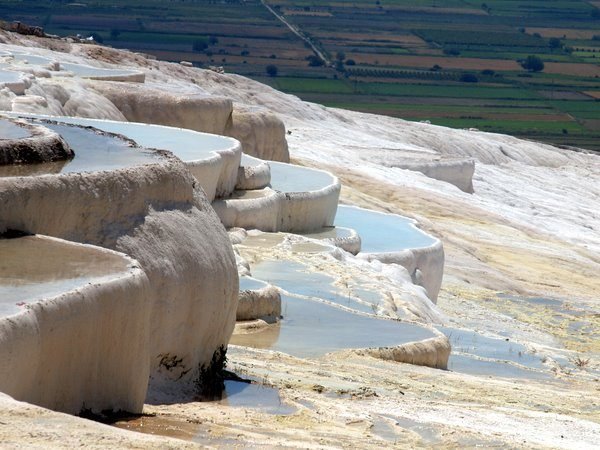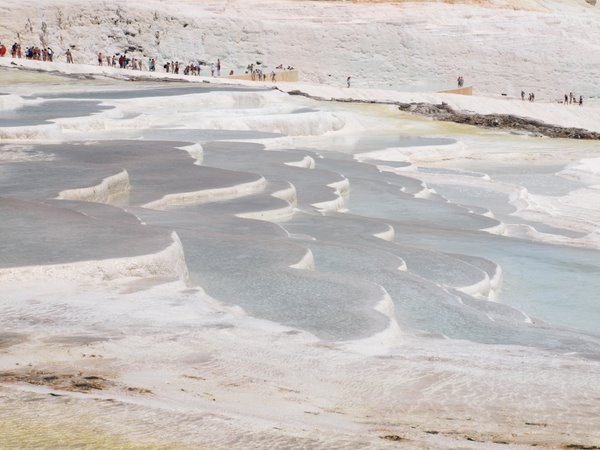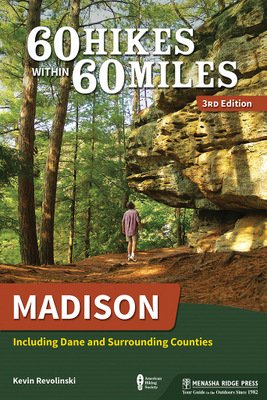Photo Gallery: Pamukkale, Turkey – The Cotton Castle
Pamukkale means cotton castle in Turkish and the name is fitting for this geological wonder where mineral rich waters tumble down the hillside leaving a gleaming white terrain that looks like frosting on a cake melting in the sun. A glut of hotels and tourism started to mar the beauty of the place and seismic activity even altered the flow of water, threatening the future of Pamukkale. When I lived in Turkey in the 90s we didn’t even bother going, hearing Turks describe it as “not like it used to be.” But the Turkish government have since moved the hotels out and a water rotation system was set up to divert what water continued to flow so that it spread evenly over the site.
Since that time I’ve been twice and it is not to be missed. While the reflecting pools and whitewashed stone are worth the visit, there are also some notable ruins nearby from the city of Hierapolis (founded 190 BCE). Plus, if you stay the night here you can see the pools at sunset or sunrise, something that tours often miss.
Wear sunglasses and plenty of sunscreen. You’ll be getting rays from all directions.
It’s not ALL white. Some of the minerals bring colors. These reminded me a lot of the salt pans of Thailand.
Romans came to this “sacred pool” for healing. Now it is a public thermal soaking area (for a fee) complete with bits of ruins on the bottom.
I always sort of looked dubiously at the labels on those sparkling mineral water bottles that said “bottled at the source” or “natural.” But yes, the water really does come out of the ground fizzy. At the sacred pool here is a place where you can try it. This won’t cost you extra; the cold bottled variety at a couple of vendors in the park will. Bring your own.
Bikinis and risqué dress are pretty common here as the tourists sort of let themselves go. But these two seem to be taking things a bit over the line of improper. I’ve seen tadpoles here on a previous trip. I wonder if there is a connection. Hm. Anyway, watch your step.
Channels have been formed to redirect water each day. By switching them on or off, the park is able to continue the calcium formation though the flow of water isn’t what it once was.
Hierapolis was founded in the second century BCE by the king of Pergamon, King Eumenes II. But you can’t have thermals and not attract Romans. The Roman bath market reached its peak about 400+ years later. You can see a small amphitheater here, a temple for Apollo and a rather well preserved necropolis.
Always be careful around ruins.
Pamukkale is a stop on a lot of bus tours which means it can get crowded. You can get to Pammukale on a day trip from Selcuk and Kusadasi. However, this does limit one’s time at the site. In fact, if you plan to lounge and wade along the mineral-coated cliffs and pools, AND swim in the sacred pool and visit the ruins, you really must come here for the night. It does make a great place to stop for the night on the path between Efes (Ephesus), Selcuk/Kusadasi, and Antalya or other destinations to the east or along the southern coast of Turkey. The bonus of an overnight stay is seeing the pools in the morning light and at sunset.






















 ORDER YOUR COPY TODAY!
ORDER YOUR COPY TODAY! ORDER YOUR COPY TODAY!
ORDER YOUR COPY TODAY!
Great photos. I need to make an effort to re-visit this place. I did not appreciate it before as was on a whirlwind tour. Would like to do a weekend there
Thanks, Natalie. I have yet to be here during a proper sunset or when the tour buses are filling the parking lot. It’s still great, but that would be even better.
Pingback: Want Greek Ruins? Go to Turkey